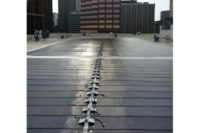More and more U.S. businesses are choosing to go green. Companies are adopting these green business practices not only to help protect the environment, but to also help improve the bottom line.What if your business could save—and potentially even make—money by going green?
There are a number of effective ways businesses can reduce energy use and conserve resources. Adopting solar energy is one of them. A solar movement appears to be taking over the American commercial industry. Large corporations such as Walmart, Apple, IKEA, Costco, and Kohl’s are all actively embracing this practice.
But you don’t have to be a large corporation to apply this double green strategy. Solar energy solutions can be adopted by companies of any size, in any industry that want to save money, while saving resources. There are several reasons why businesses should consider transitioning to clean and renewable energy sources, such as solar.
Impacting the Bottom Line
Solar is more than just an energy solution; it’s a financial solution that’s becoming more viable and cost-efficient. Solar PV systems can be a great advantage to businesses by providing a long-term solution and a financial payback.
“Aside from environmental implications, solar is a sound, long-term investment that can allow a company to fix a portion of their future operating costs,” says Matt Owens, president of Greater Cincinnati based roofing and solar company Ameridian Commercial. “No one knows what the price of electricity will be five or ten years from now, but with solar energy, you can limit costs and minimize exposure to future market changes.”
By adopting solar energy, companies can also improve cash flow. If a system is owned and financed directly by the building owner, there is an up-front cash outlay that results in negative cash flow until the system is paid for. In the current market conditions, and with the incentives available for a commercial solar system, the payback period can be a quick as 60 months.
If the upfront financial resources are an obstacle to procuring a system, there are several alternatives that are becoming more commonplace. On of them is PACE financing, which stands for Property Assessed Clean Energy. In this scenario, the system is owned by the building owner, and there is a long term financing agreement that recaptures the loan payment as part of the property tax assessment. There are several conditions that must be met in order to make this a viable option, but it is a means of financing a PV, or other renewable energy or energy efficiency project, without laying out cash upfront.
“Once the investment costs are recovered, there is a steady, positive cash flow from the avoided costs of purchasing energy from other sources,” says Owens. “In addition, there is likely an income stream from the sale of Solar Renewable Energy Credits. The expected energy output of the system can be modeled with a reasonable degree of accuracy, so the expected monthly “income” from the system can be identified and built in to a company’s financial operating plans.”
Take Advantage of Rebates and Incentive Programs
There are dozens of loan, rebate and tax programs to encourage business to apply energy efficient practices.
“Funding and other credits are one of the driving forces pushing companies to take part in this growing industry,” stated Owens. “In some industries, there are performance requirements placed on suppliers by larger manufacturers in order to maintain business relationships. Renewable energy sources can be one way to meet those expectations.”
The most significant financial benefit for businesses interested in installing solar is the Federal Investment Tax Credit. With this benefit, owners of newly-installed solar panels receive a federal tax credit of 30 percent of the cost of the system. This incentive remains in effect through December 31, 2016.
Reduce Your Company’s Carbon Footprint
Research shows that using solar helps combat greenhouse emissions. It also reduces our nation’s dependence on fossil fuels. This reduction of fossil fuel use can often be claimed and realized by companies - in particular those in the manufacturing segment - that are striving to comply with environmental programs, such as ISO 14001.
Solar panels have a life of at least 30 years, so once installed, the environmental benefits last for decades. That means cleaner air, water and soil for generations to come.
Build Your Brand and Stay Competitive
Sustainability and corporate social responsibility not only demonstrate a company’s values, they also impact the bottom line. Consumers are recognizing and rewarding businesses that are committed to sustainabilityandchoose to operate responsibly.
Green business practices also can help recruit and retain employees who appreciate their employers’ commitment to operating responsibly. Oftentimes employees feel more connected to and invested in the success of the company in which they work, and in turn are more engaged, more productive and happier.
Recent Industry Developments
With the overall growth of the industry, material and product suppliers that historically serviced other industries, such as automotive, have turned their attention to the renewable energy market. Many new products and services have been developed, which have led to some standardization and common practices in the industry.
Available physical space can be a limiting factor when a business is considering solar. However, there have been advances in alternative mounting solutions, such as parking canopies, awnings, and other free-standing structures. These pre-engineered structures make them fairly easy to specify and construct at a given site.
Another recent development is the application of bi-facial modules paired with a reflective white “cool” roof system. These modules have solar cells on both sides, which allows energy production not only from the sunlight directly hitting the face of the module, but also from light reflected off of the roof surface and on to the back side of the module. This results in greater energy production in the same roof space.
Additionally, the overall costs of solar panels, installation and upkeep have diminished considerably over the years. However, quality, variety and versatility have improved. And as electricity prices continue to increase, the implementation of solar becomes even more appealing.
Other Renewable Energy Options
Not every business is able to install renewable energy technology at their facility. However, there are other opportunities for utilizing renewable energy.
In some cases, a business can buy green power, electricity that is generated from renewable energy sources. This green power can be purchased for a facility directly from many utilities. Green power products can include electricity generated exclusively from renewable resources or electricity produced from a combination of fossil and renewable resources.
If a utility does not offer green power options, a business may be able to purchase Renewable Energy Certificates, or green tags. These green tags are tradable, non-tangible energy commodities that show proof that one megawatt-hour of electricity was generated from an eligible renewable energy resource.




